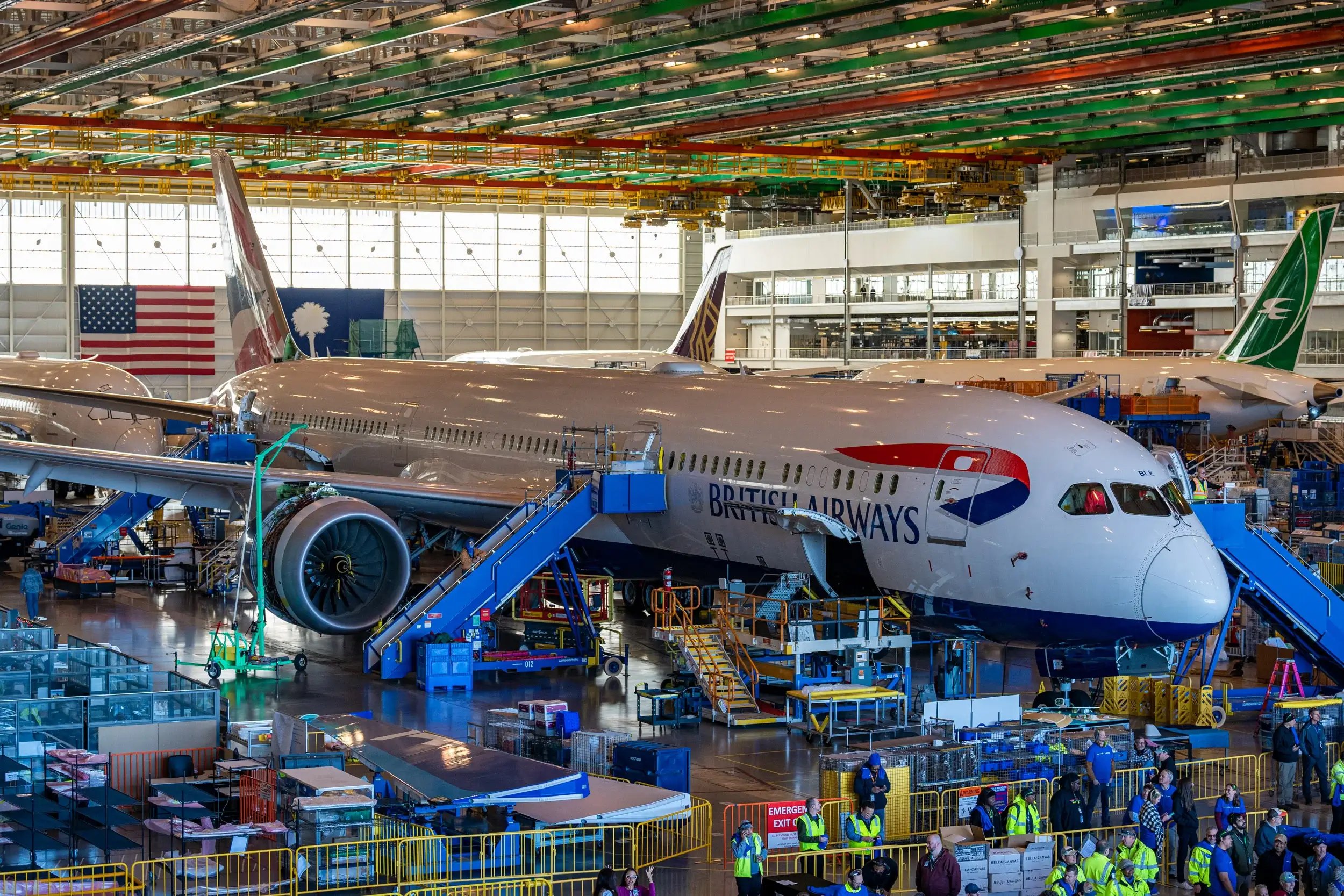Committed to the certification of four aircraft (737MAX 7, 737MAX 10, 777-9, 777-8F), Boeing has also launched the ramp-up of production rates on the 737 MAX and 787, while pushing ahead with the Sustainable Flight Demonstrator and Wisk Gen6 innovation programs.
Boeing's top priority: four airplanes to certify
At every public meeting, Boeing president Dave Calhoun is asked about the aircraft manufacturer's plans for a new family of airplanes by 2035. And a new meeting with the international press, including a very large European contingent, at Boeing's Charleston, South Carolina site, was no exception to what has almost become a ritual. And the answer is the same: "the top priority is the certification of the 737 MAX 7, 737 MAX 10 and the 777-9 and 777-8F. Our teams are fully mobilized on these objectives", he stressed. Ordered by Southwest Airlines, "the 737 MAX 7 will be certified in 2023", said Mike Fleming, Director of Program Development and Customer Support at Boeing Commercial Airplanes.
It will take longer for the Boeing 737 MAX 10, which requires design modifications and whose flight test program now involves three aircraft. The number of flight hours accumulated is 8,500 out of a total of 400 "missions" (flights). "The objective is to enter commercial service in 2024", added Mike Fleming. The two models in the 737 MAX family total over 800 firm sales, including more than 600 for the 737 MAX 10. Another hot topic is the 777-9's path to certification. Test aircraft now total 2,800 flight hours in 1,000 missions. "The timetable hasn't changed: certification and entry into commercial service in 2025," comments Mike Fleming.
No competitor to a possible A220-500
Even the prospect, denied by Airbus, of launching an A220-500, a version stretched even further towards 180 passengers, isn't sparking any desire on Boeing's part to put forward a possible competing offer. "Firstly, this A220-500 has not been launched. Secondly, if this version is in itself a good product, it will be competing in a market that demands the versatility offered by a family of aircraft. And I don't see the point of an airline swapping an A320neo for an A220-500", says Darren Hulst, Marketing Director for Boeing Commercial Aircraft. "Offering a competitor to the A220 is not our priority at all," stresses Dave Calhoun, who continues: "I'm not going to start with an airplane that we're going to shrink. I'm leaning more towards a smaller aircraft using electric propulsion".
It's true that the 50-seat market is now occupied by just one manufacturer, ATR, and that this type of aircraft module, in view of its capacity and range, is a technologically and commercially credible response to the ecological transition of air transport.
Sustainable Flight Demonstrator and Wisk Gen6
At Boeing, innovation means both the EVTOL or ADAVE program developed by Wisk, which is now a 100% subsidiary of the aircraft manufacturer, and the Sustainable Flight Demonstrator program with Nasa. Two airframes are planned for the future demonstrator developed with Nasa, with a first flight scheduled for 2028. The aircraft, a transonic twin-jet with a high wing span and high aspect ratio, will be equipped with a guyed wing and is primarily intended as a successor to the single-aisle aircraft currently in service. "This aircraft is destined to occupy approximately 50% of the single-aisle short- and medium-haul commercial market, will benefit from fuel consumption gains of up to 30%", Nasa administrator Bill Nelson added at the announcement.
At the same time, Boeing has become a 100% shareholder in Wisk Aero, which is developing an autonomous, all-electric, vertical take-off and landing air cab (ADAVe or eVTOL in English) designed to carry four passengers. As Wisk Aero's market-ready aircraft, the Generation 6 is the very first candidate for FAA type certification of an autonomous eVTOL.
Increasing production rates on the 737 MAX and 787
This long-term work is accompanied by the implementation of increased production rates on the 737 MAX and 787. The aim is to increase production rates from the current three 787s per month to five per month by the end of this year, with a gradual rise to 10 Boeing 787s per month by 2025 or 2026. To this end, a second assembly line will be added to the Charleston site, replacing the fuselage section joint verification line, which is installed in parallel in the same hangar as the current assembly line. Infrastructure work has already begun, and everything should be ready by 2024. The fuselage section joint verification line will be transferred to Everett. This industrial evolution will give the Charleston site the capacity to ramp up to a production rate of 10 Boeing 787s per month, at a rate of five aircraft per line.
Découvrez cet article sur Air&Cosmos

